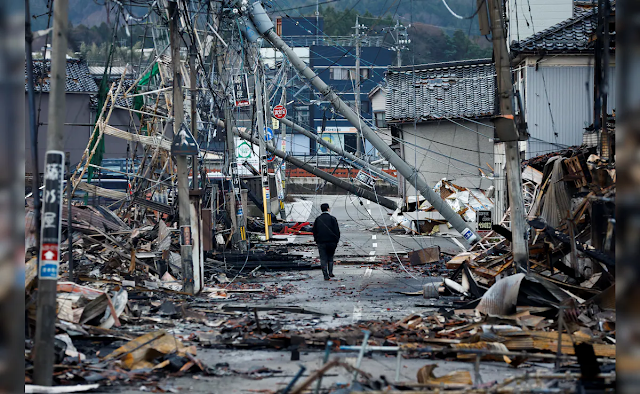Severed Roads, Remote Location: Challenges Of Japan Quake Rescuers As Survival Time Nears
Rescuers face formidable challenges in their efforts to locate survivors of the New Year's Day earthquake that claimed at least 81 lives in Japan. With the critical three-day survival window set to close on Thursday afternoon, thousands of responders are pushing to rescue as many people as possible. Japanese Prime Minister Fumio Kishida emphasized the urgency, acknowledging many individuals trapped in collapsed buildings eagerly awaiting rescue.
As the clock ticks, the difficulties compound due to severed roads and the remote locations of the worst-affected areas. The Noto peninsula, struck by the main quake, has experienced nearly 600 aftershocks, heightening concerns about additional damage to infrastructure.
Three days post-disaster, material aid has been slow to reach evacuees, leaving them isolated in freezing temperatures and harsh weather conditions. Limited access to food, water, warmth, and communication persists, further exacerbated by challenges in delivering essential supplies.
The road network, severed by the quake, hampers not only the distribution of aid but also the restoration of vital services like electricity, water, and mobile connectivity. Wajima city's mayor, Shigeru Sakaguchi, highlighted the critical need for more assistance, citing numerous chokepoints on prefectural roads.
While some relief supplies have arrived, mayors stress the inadequacy of the current aid. Internet access, medical resources, and proper sanitation facilities remain lacking, prolonging the hardships faced by evacuees.
Residents express growing concerns about health risks, including the potential spread of flu and COVID-19. Kyoko Kinoshita, 62, shared her worries about the lack of running water and insufficient supplies for infants in the evacuation center.
In response, the government has pledged proactive supply provision, regardless of official requests from local authorities. The number of Self-Defence Force members involved in rescue operations has been quintupled since Monday. Some aid is reaching affected areas via sea routes, although challenges persist, with larger ships unable to dock due to the earthquake's impact on the seabed.
Beyond the immediate human toll, the earthquake has economic implications, with manufacturers assessing damage to production lines. Display makers and semiconductor firms are repairing facilities, while the Tokyo Stock Exchange observed a minute of silence in remembrance of the earthquake victims and the tragedy at Tokyo Haneda airport, where five Coast Guard members lost their lives en route to deliver aid.



Comments
Post a Comment